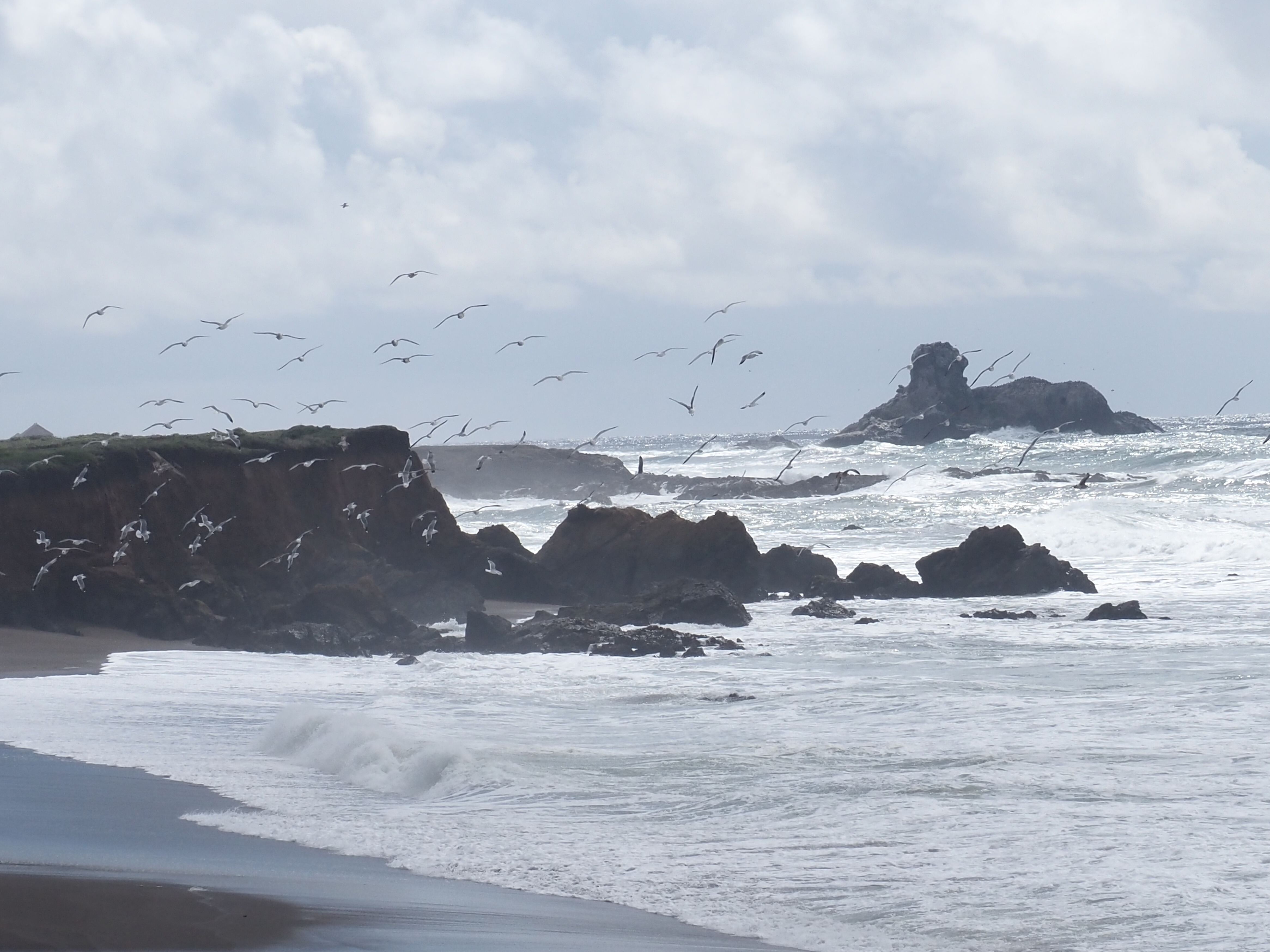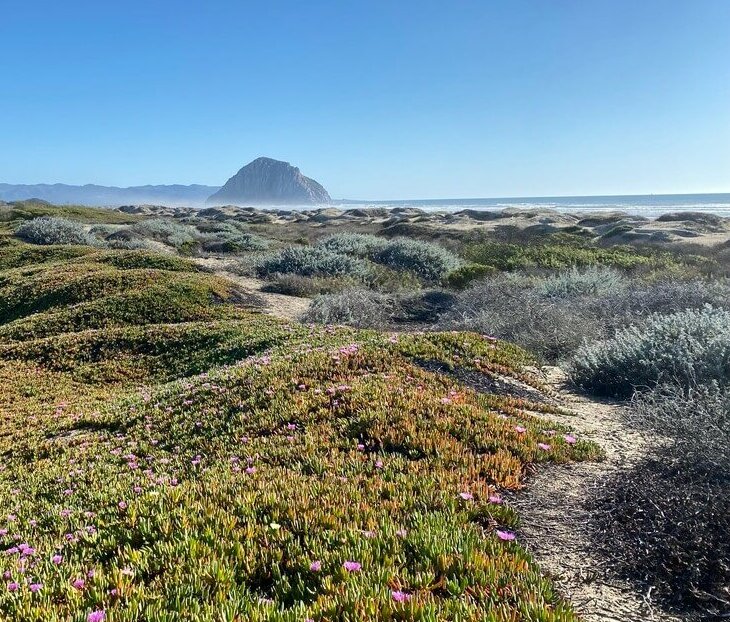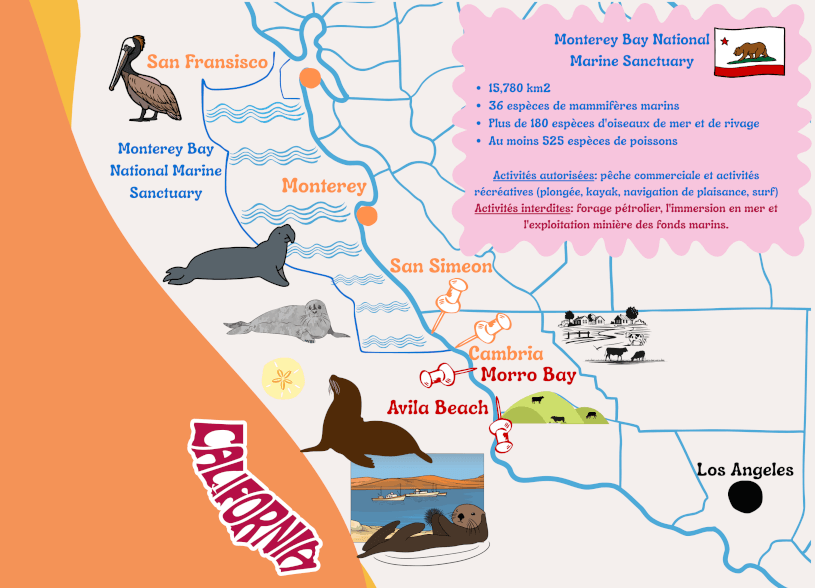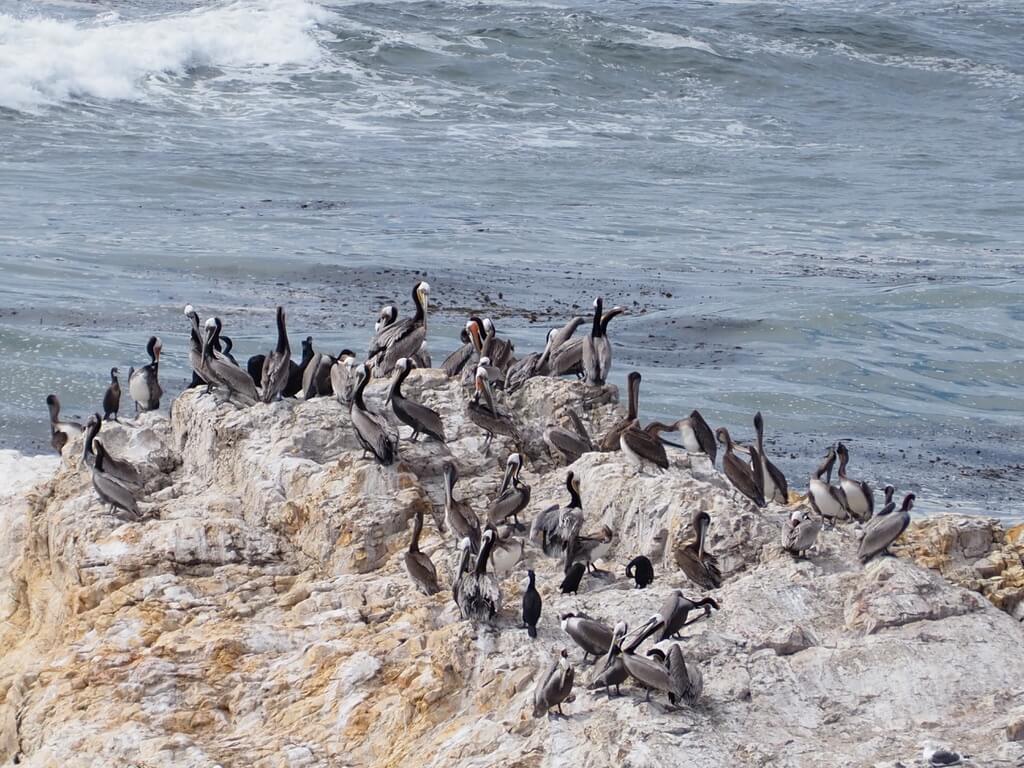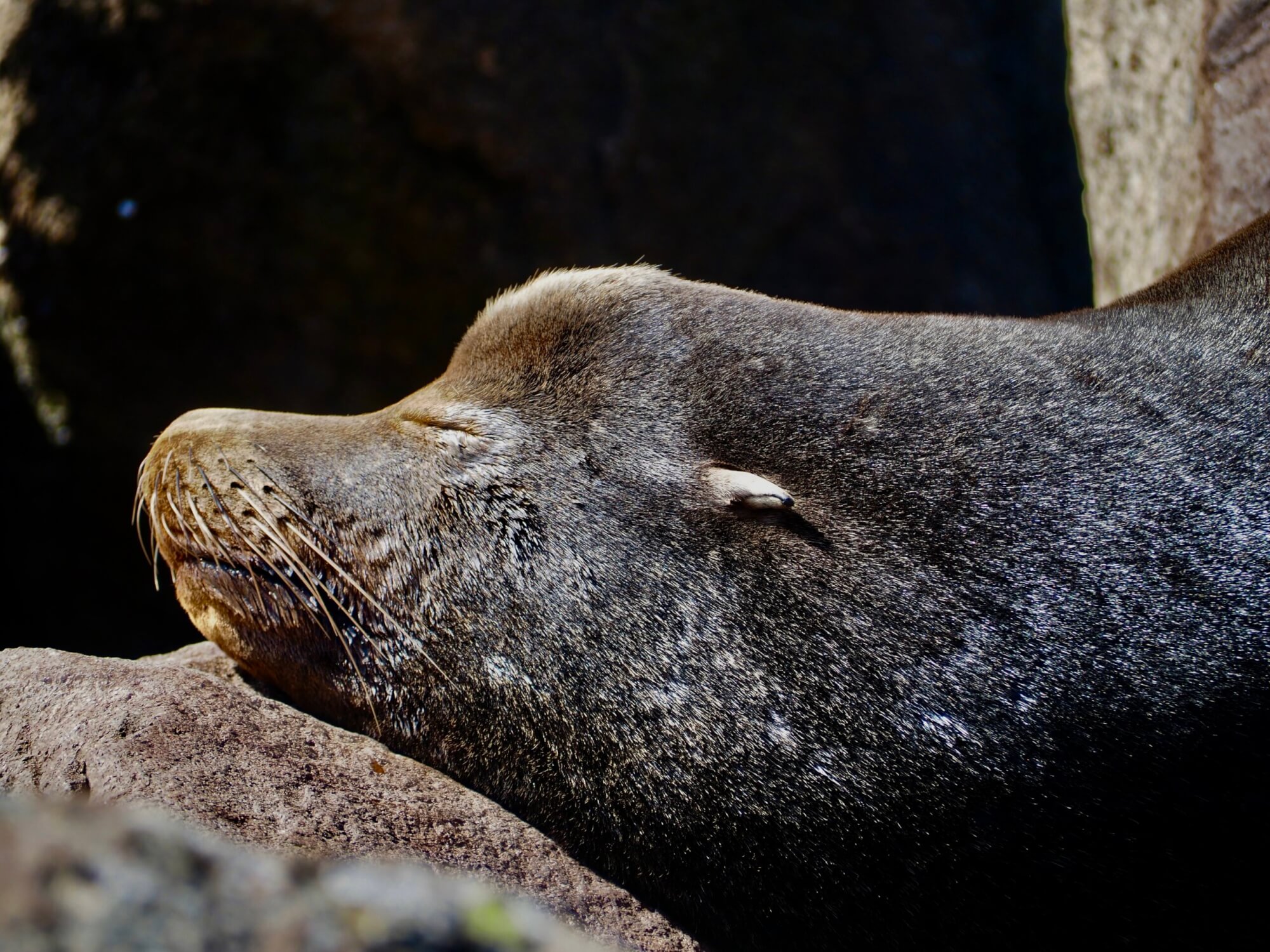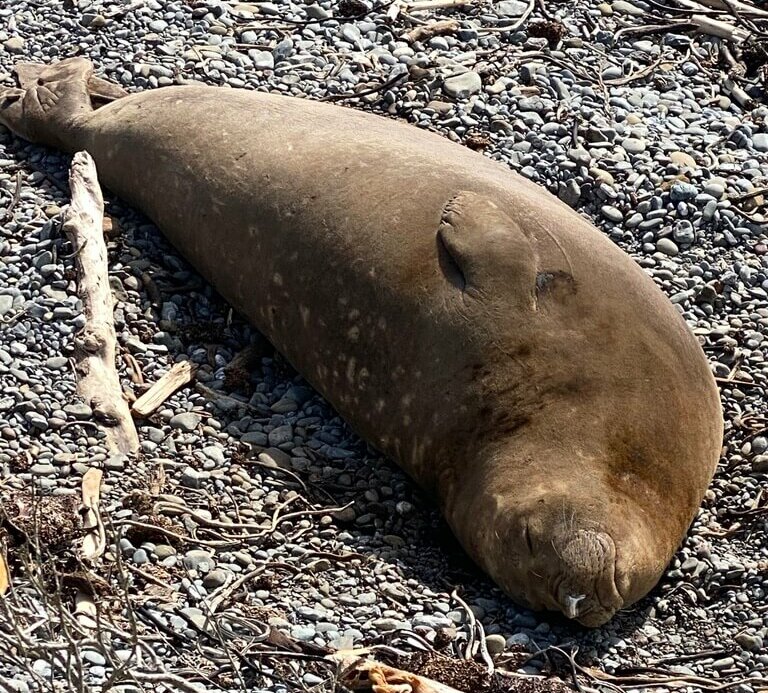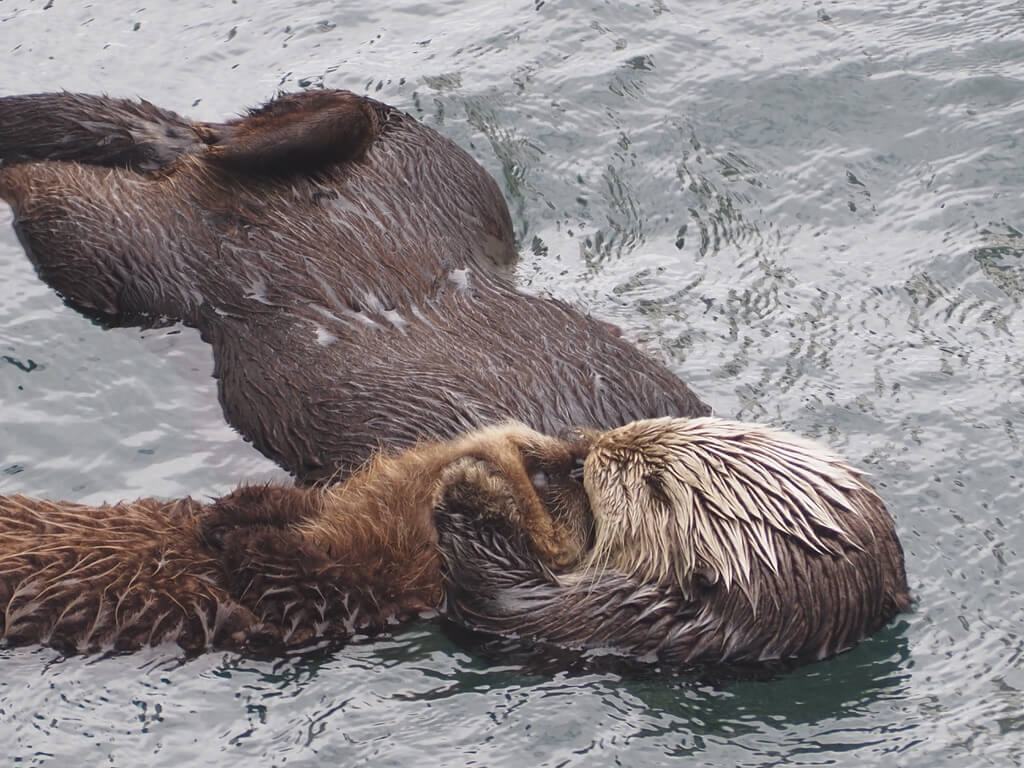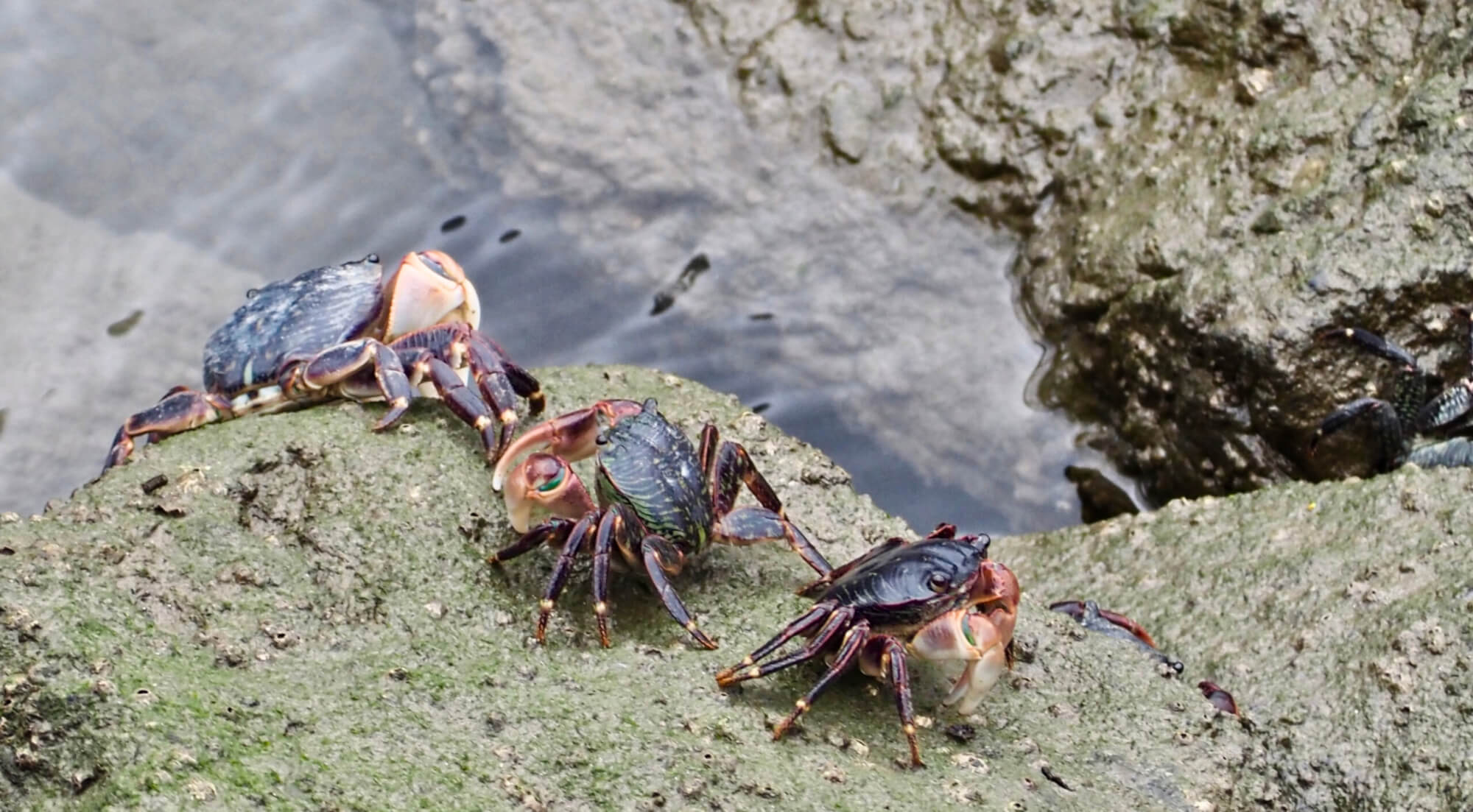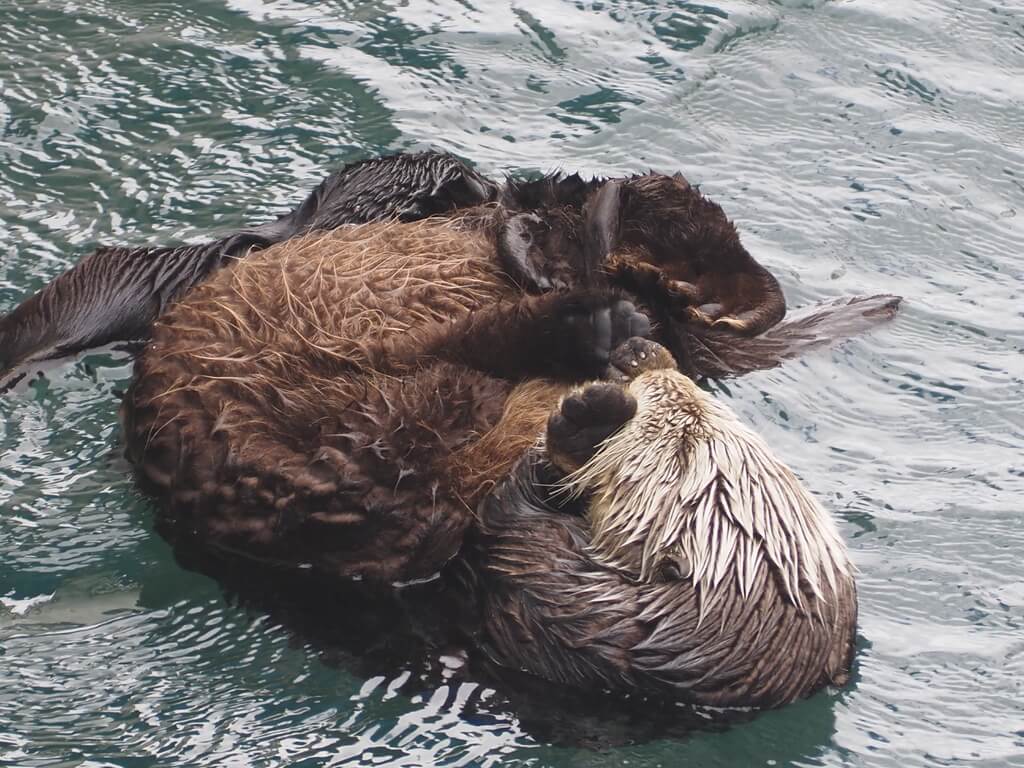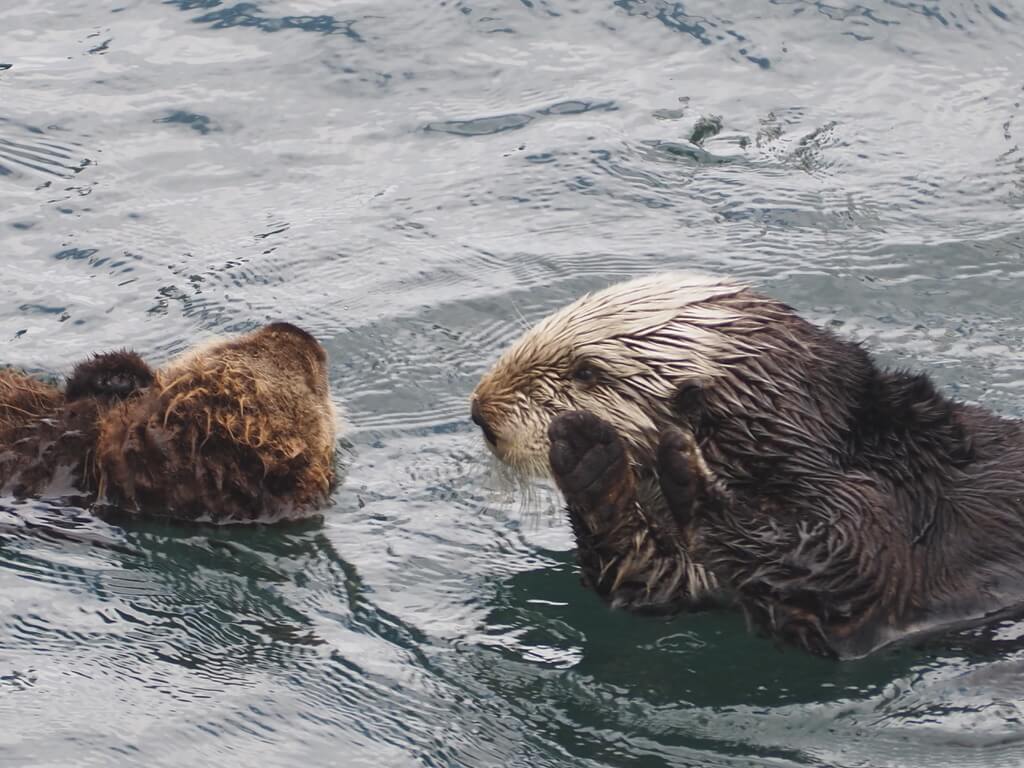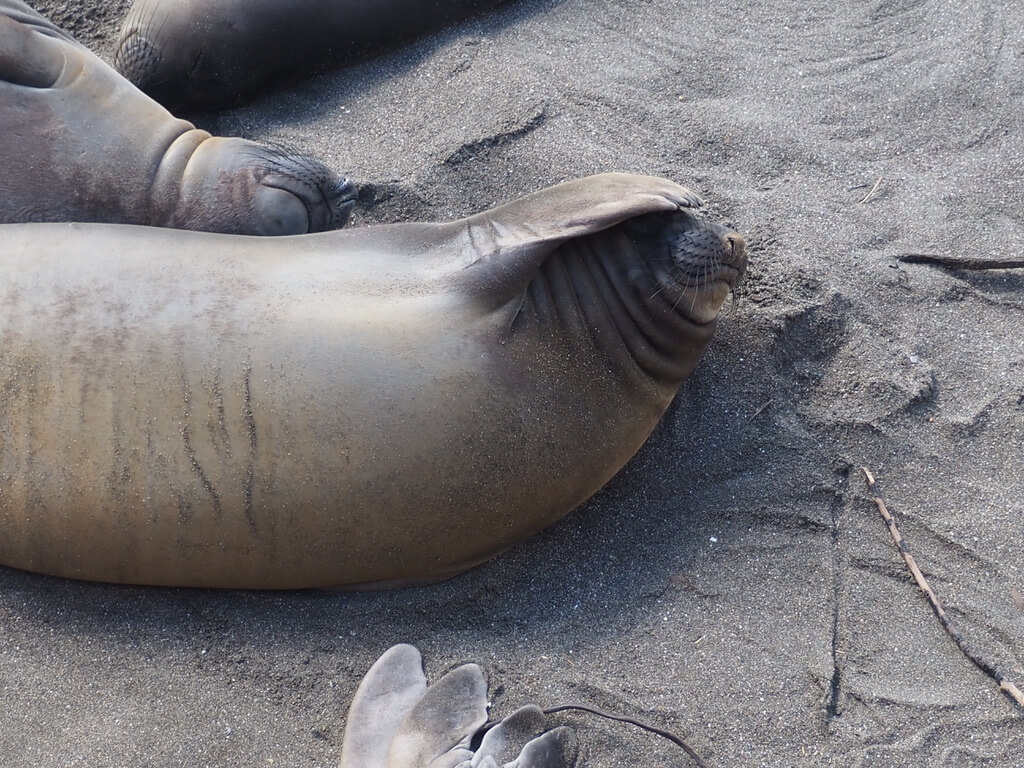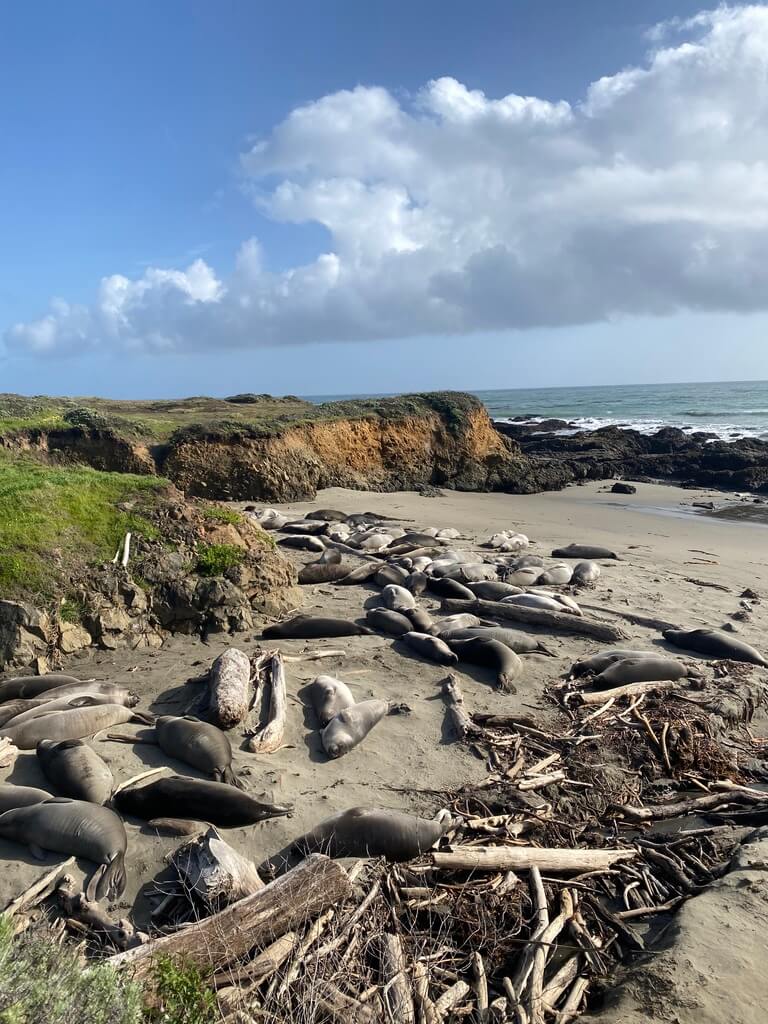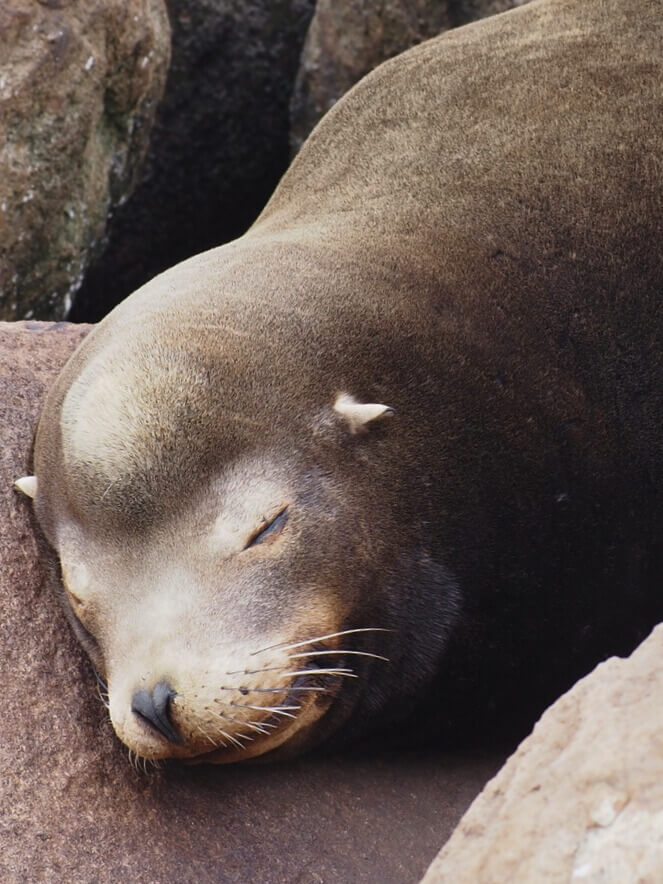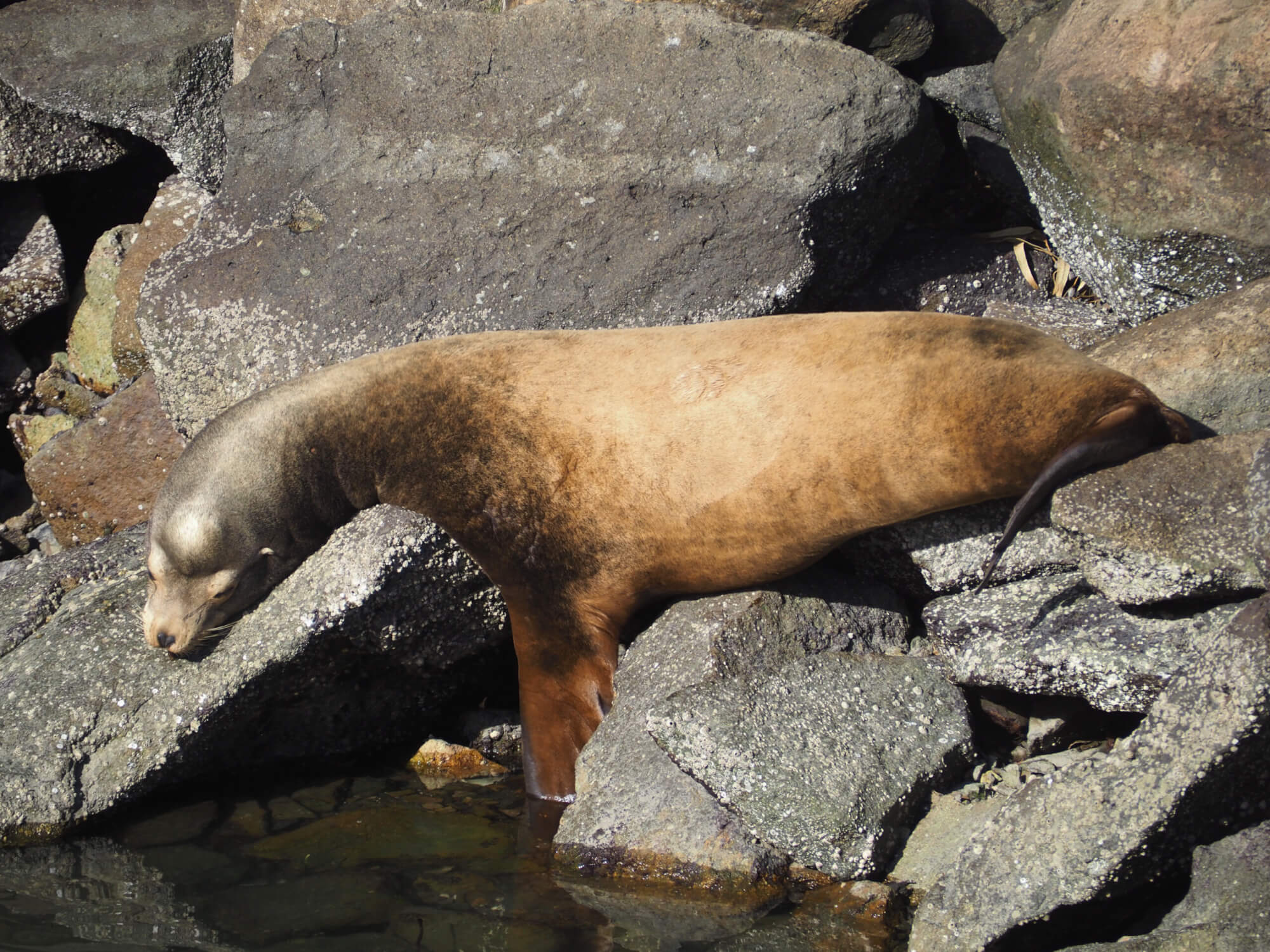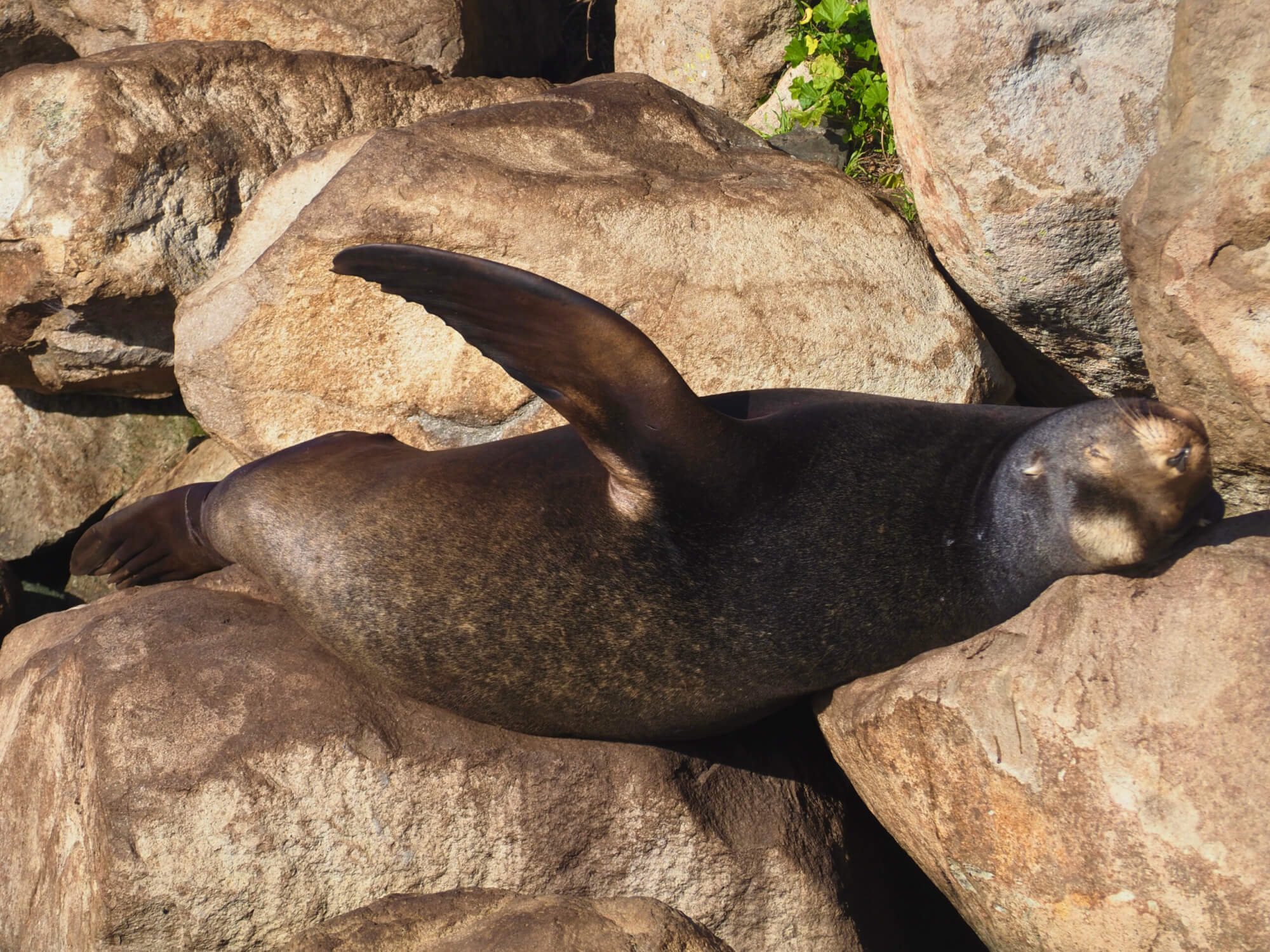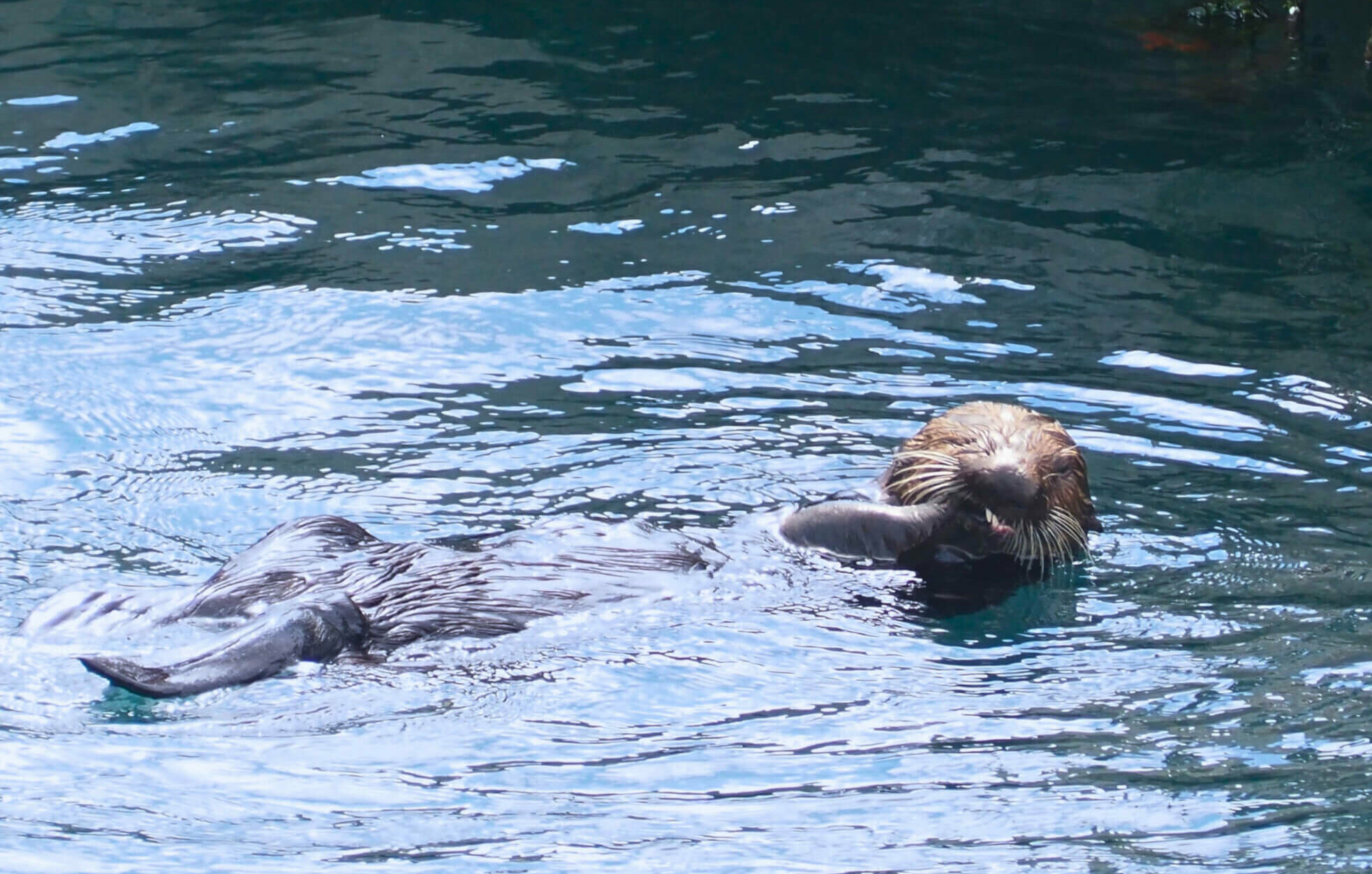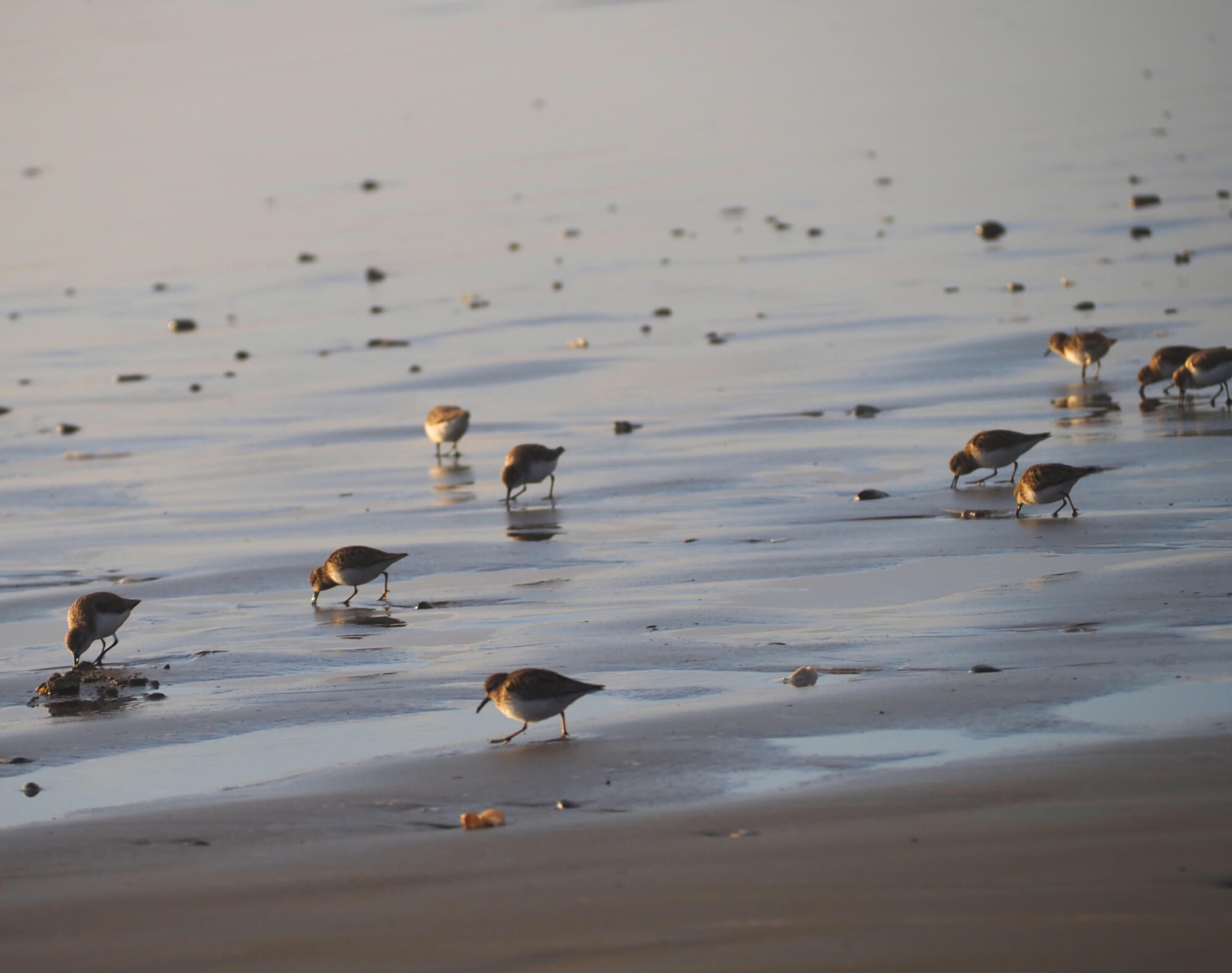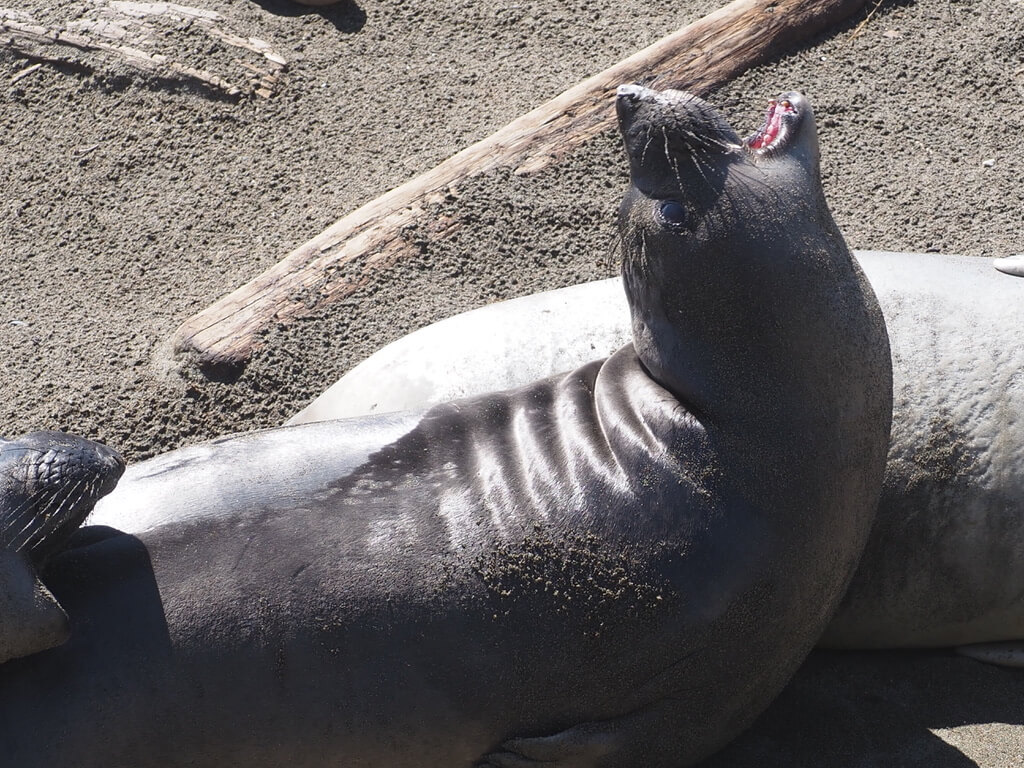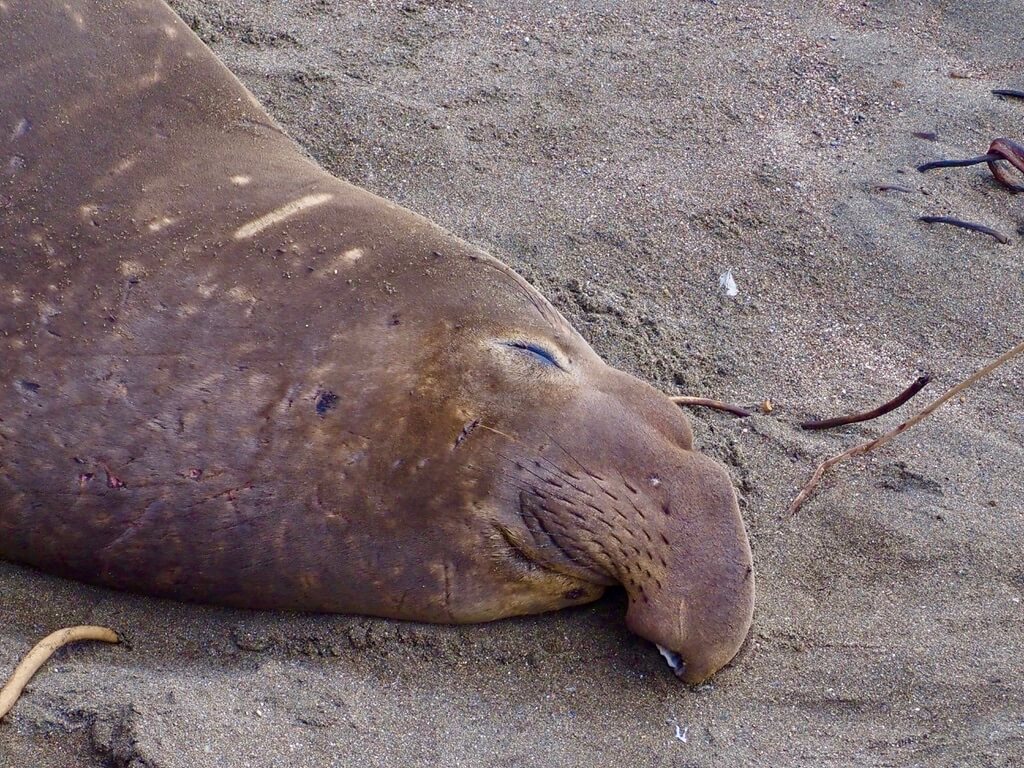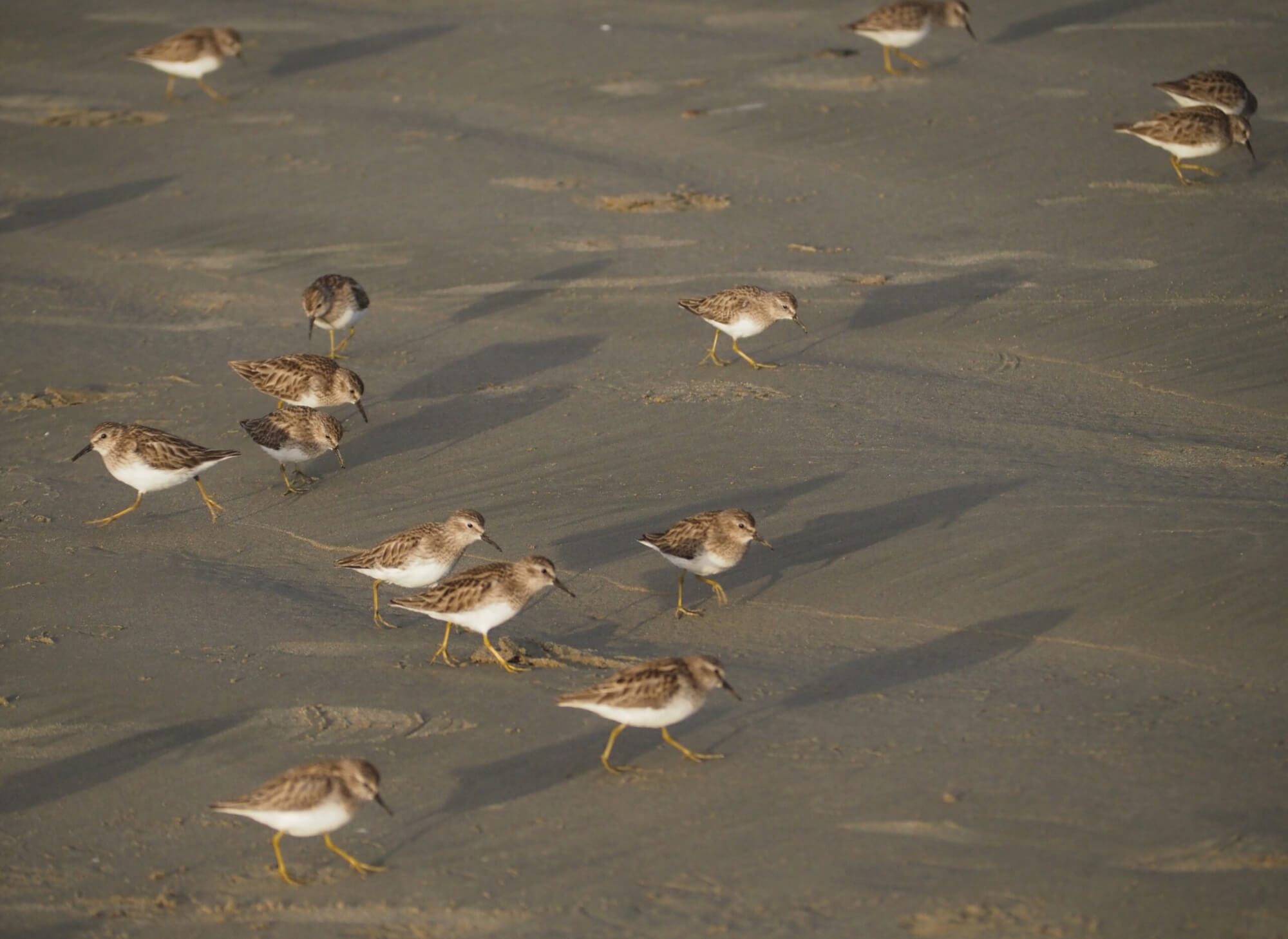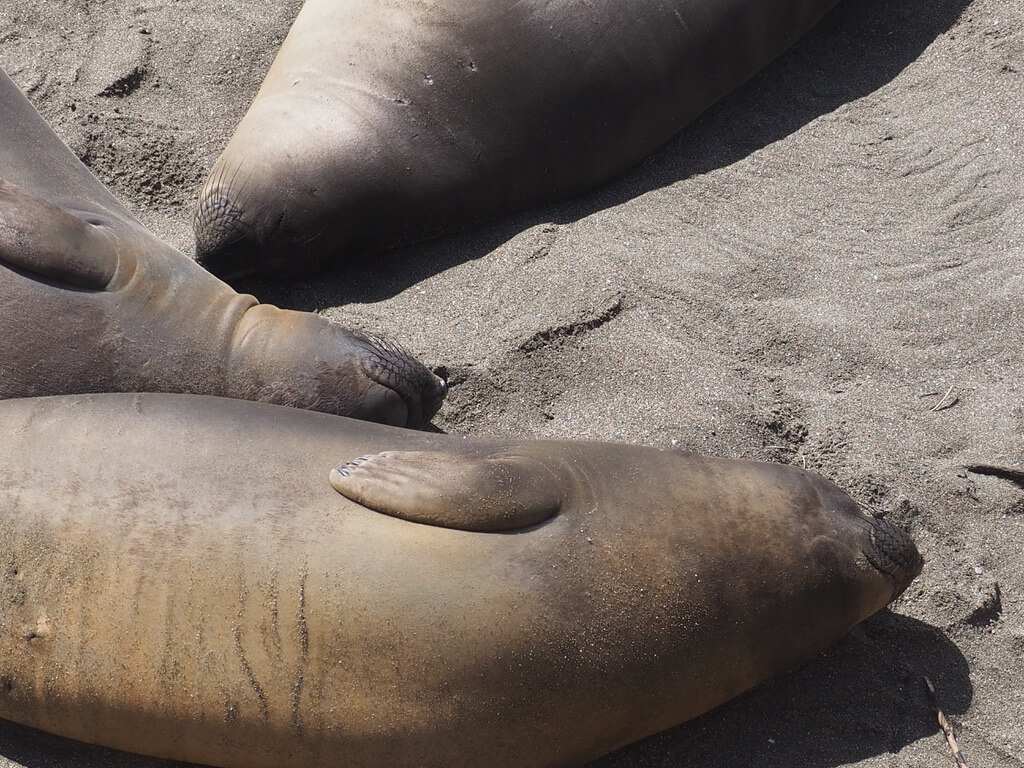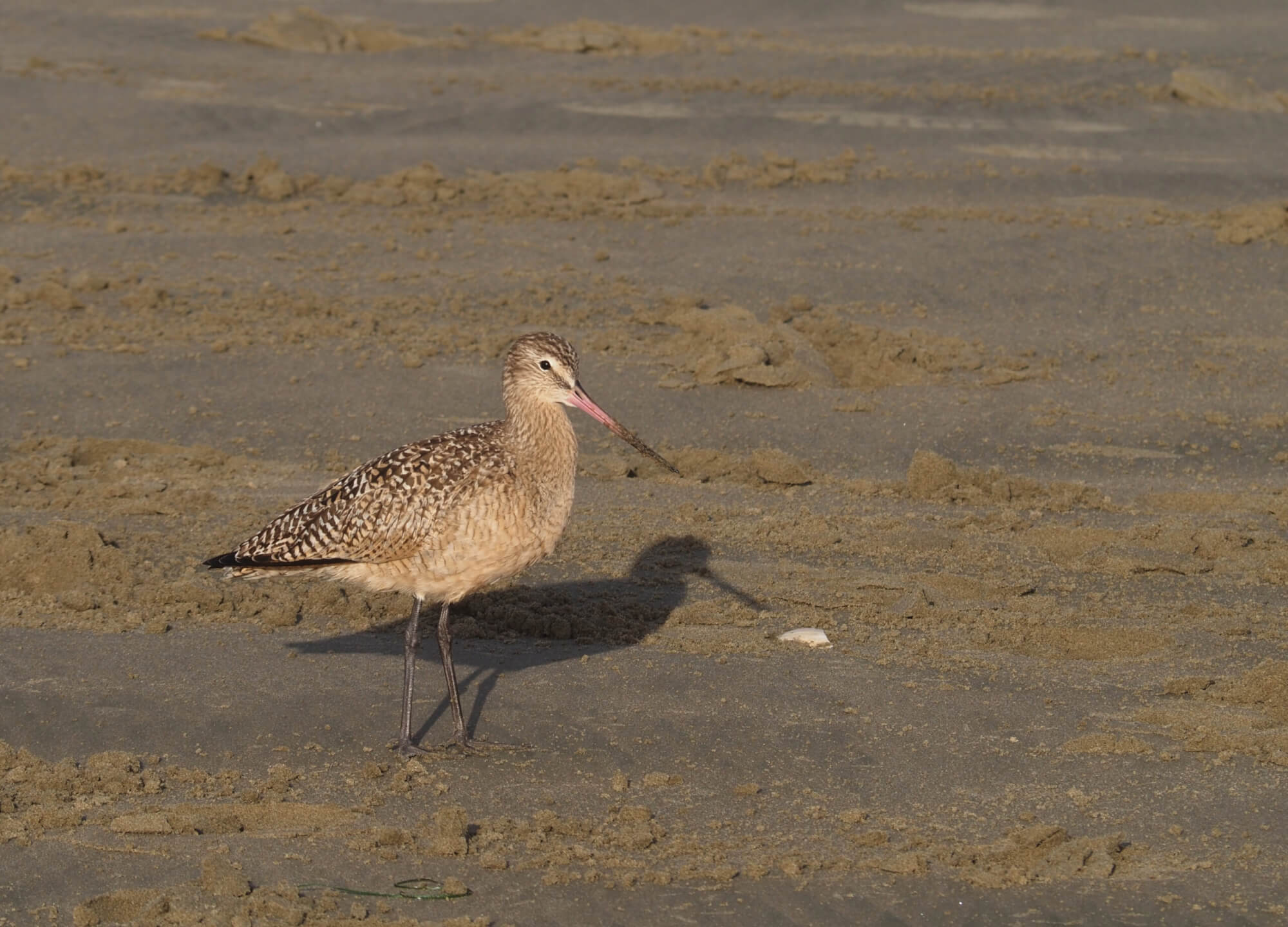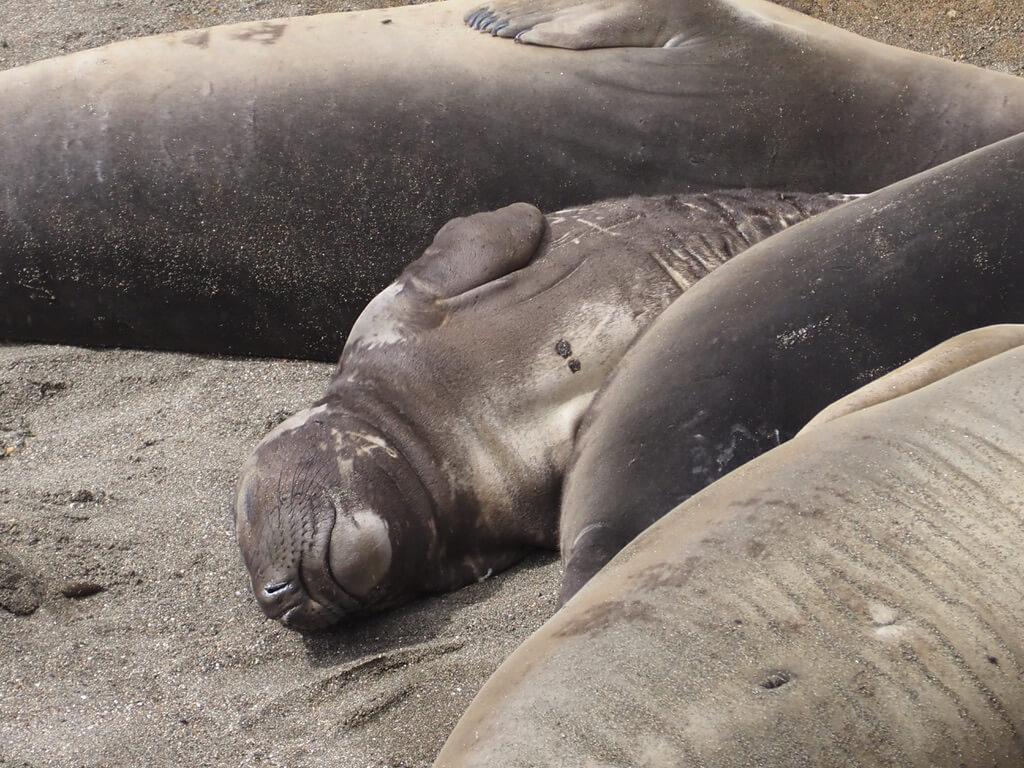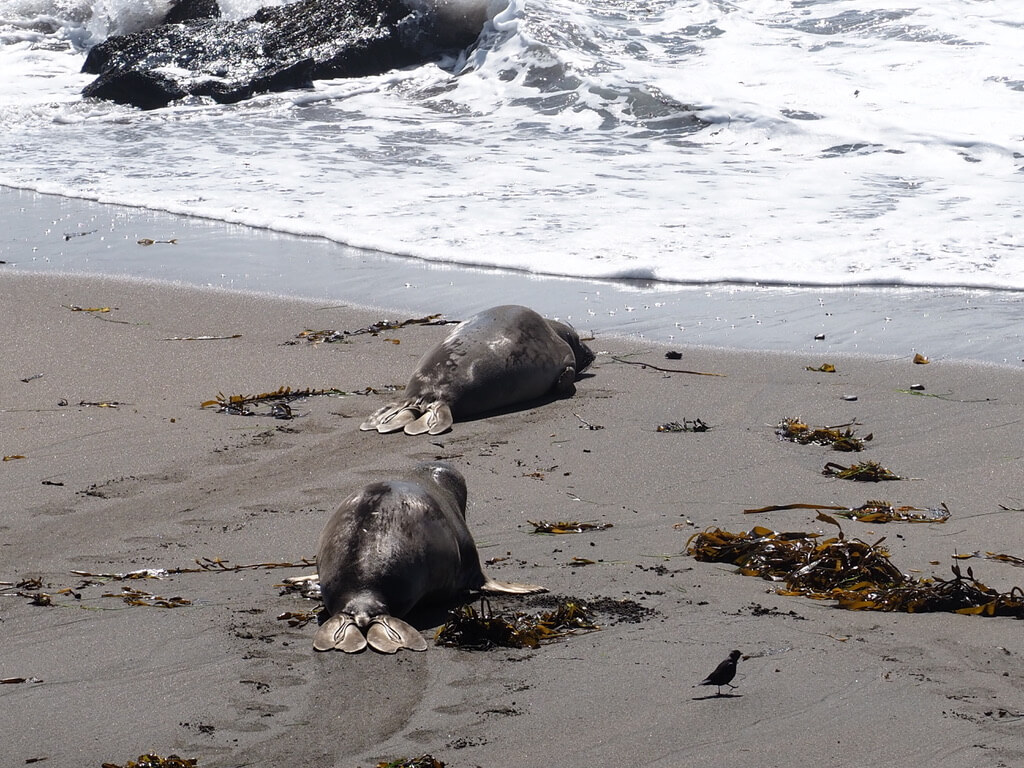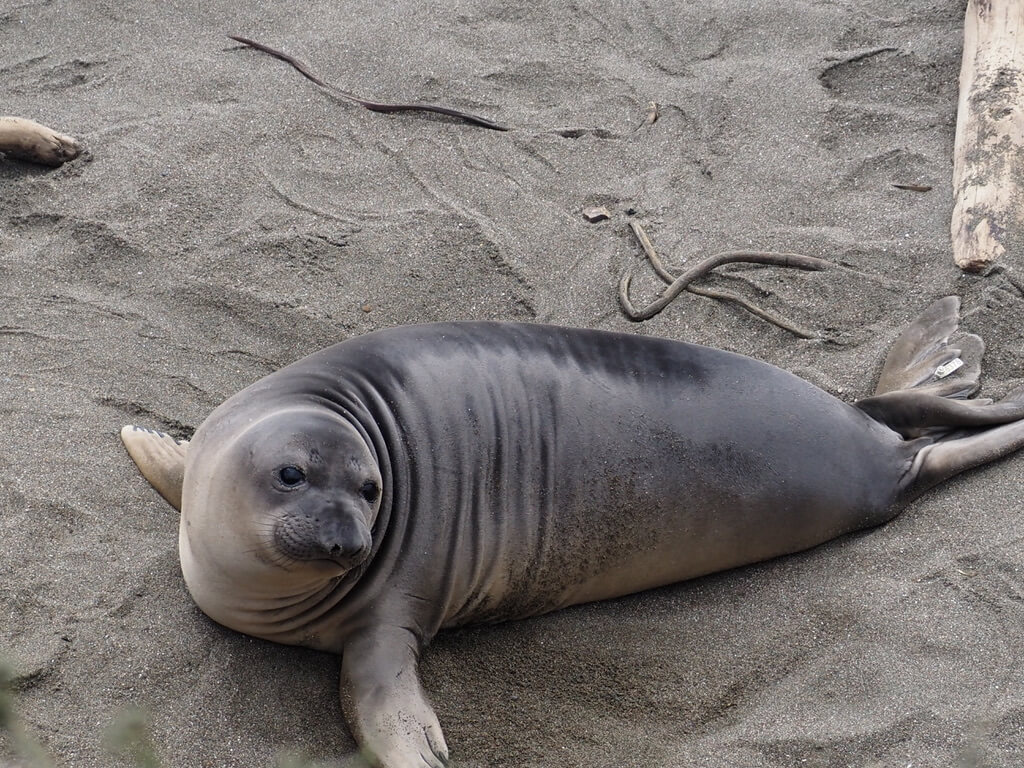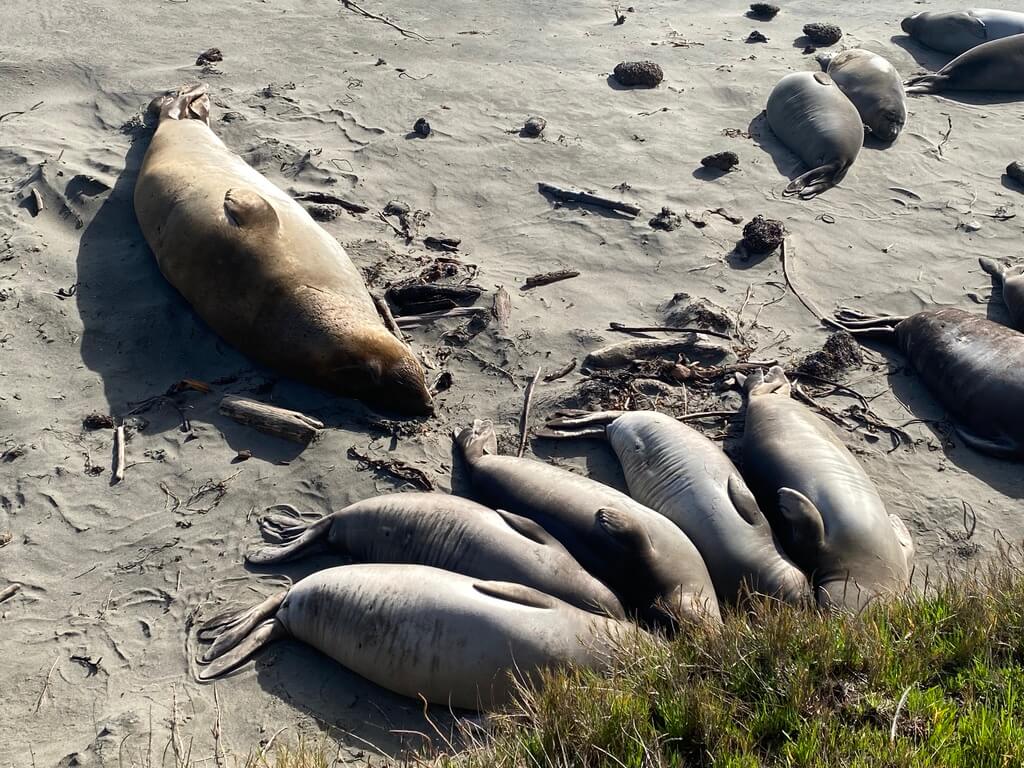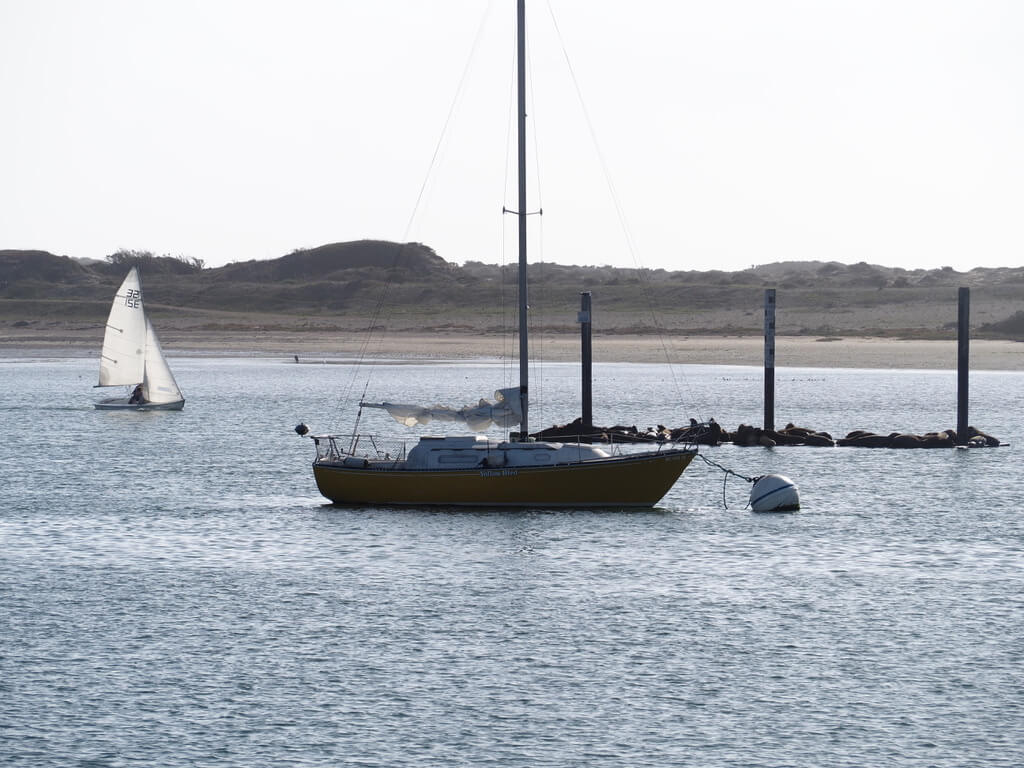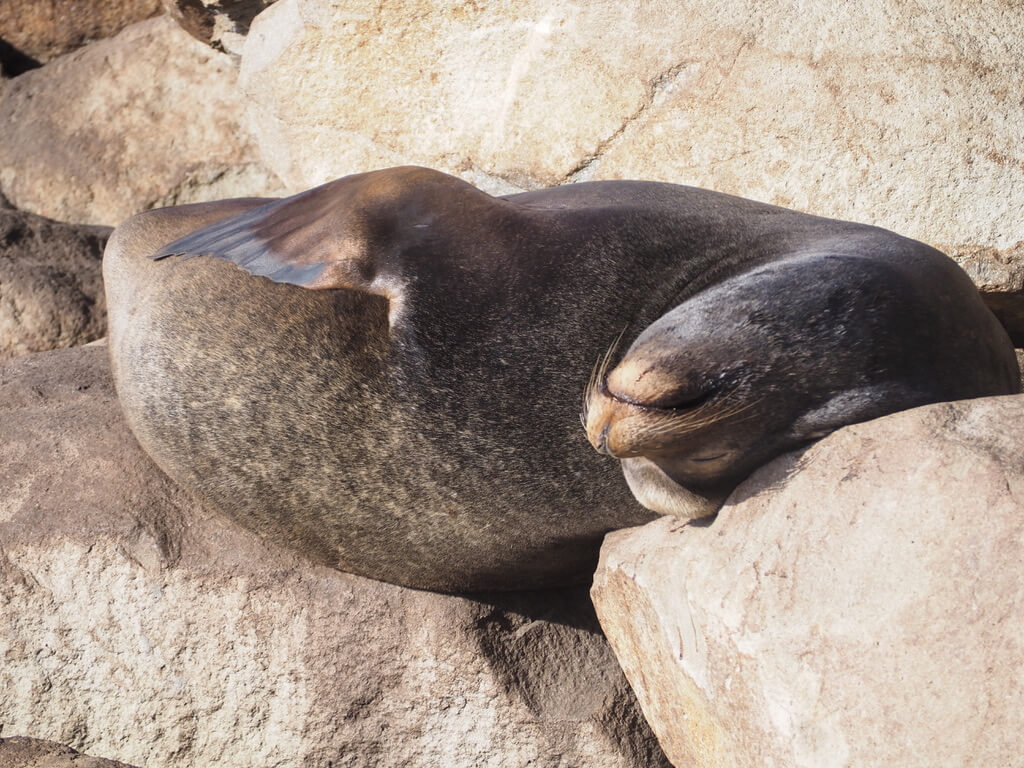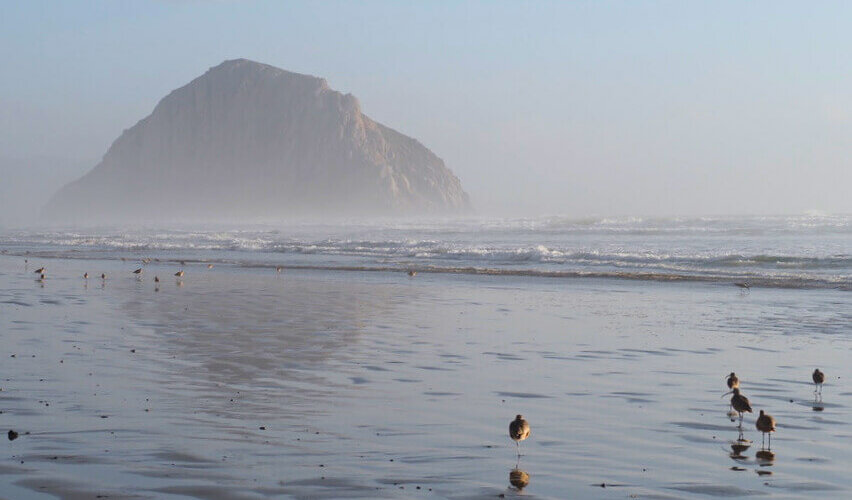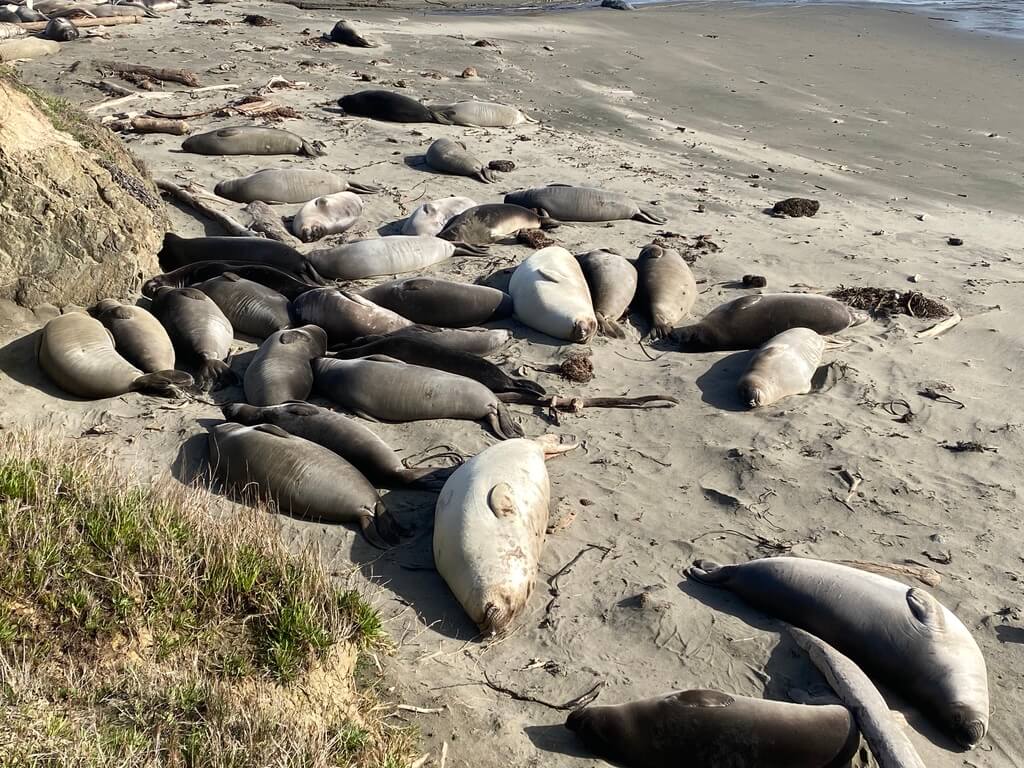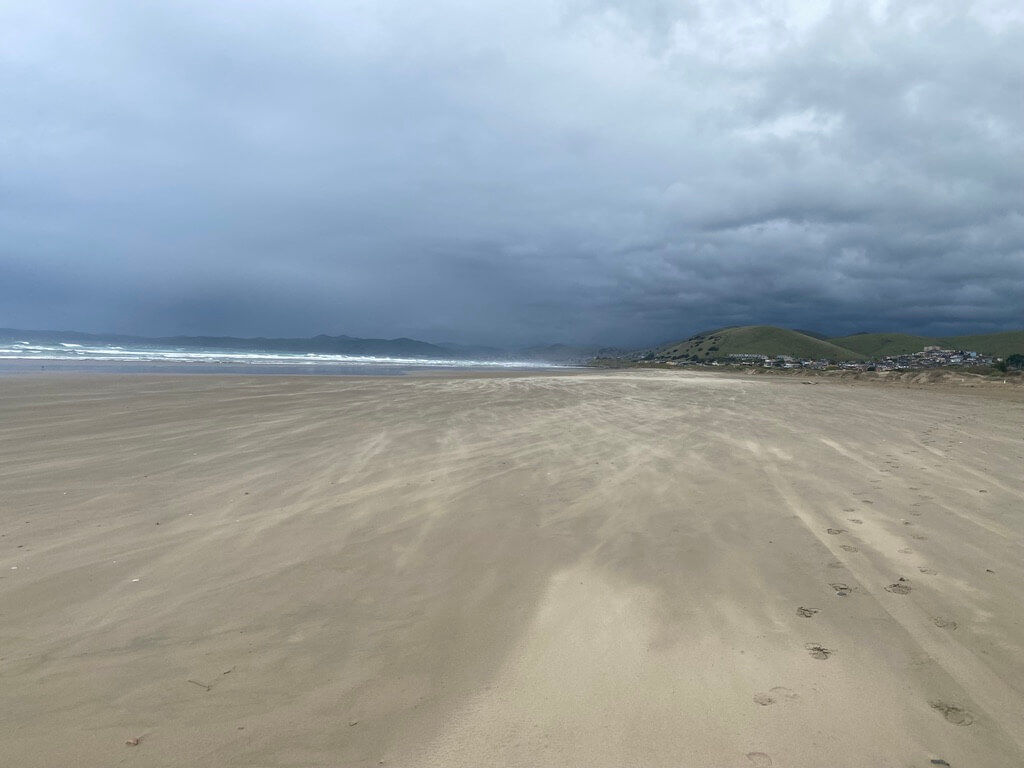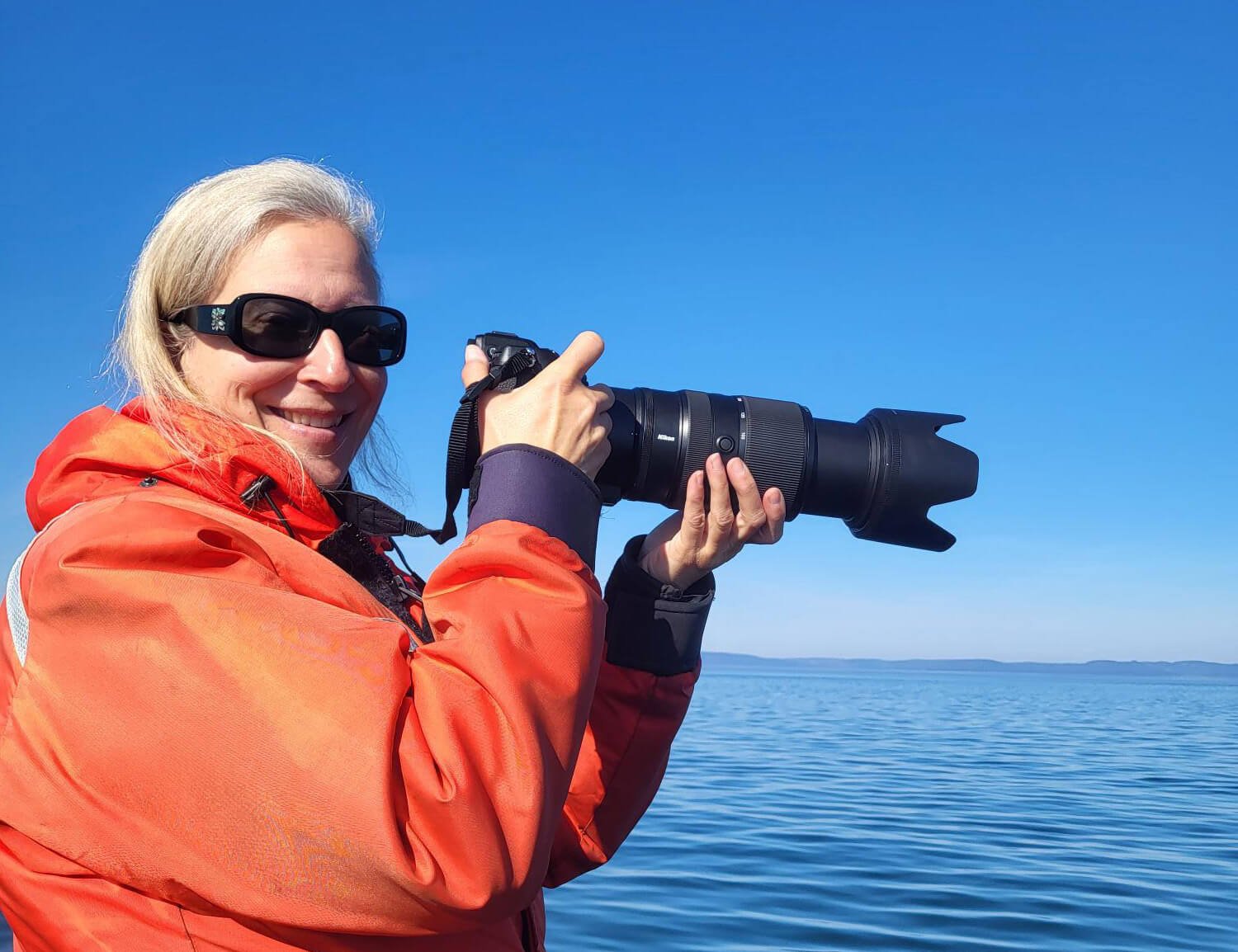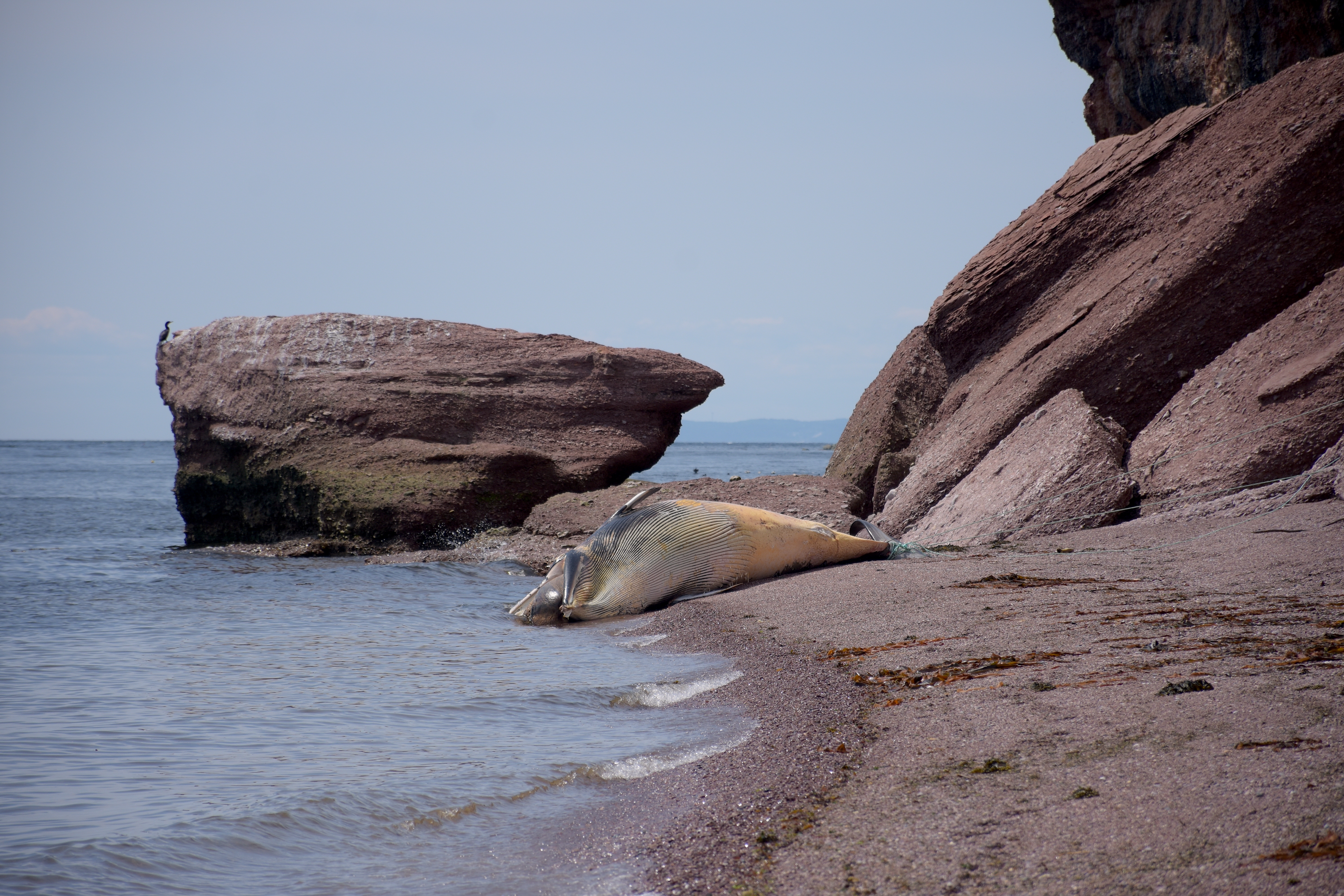Last March, I had the opportunity to travel to Morro Bay, a small seaside village in central California. The sea spray of the Pacific Ocean offered a vivid contrast to the bone-chilling cold of the North Shore. Gentle breezes, sparkling sunshine, and long stretches of golden sand overlooked by green hills enlivened my journey. But most especially, it was the rich and abundant regional wildlife that often left me speechless. This week, take off your raincoats and boots, because I’m taking you to a land where fine weather seems to be a year-round affair.
A waking dream on the Pacific coast
Lying three-and-a-half hours from Los Angeles, this region immediately turns my perception of a state I am already familiar with on its head. Expecting urban sprawl and crowded beaches, we are surprised to arrive in a fishing village surrounded by ranches and pastures where black cows graze. The fields and hills are carpeted with orange poppies, the official state flower. Vast forests of oak and eucalyptus border the dunes brightened by succulents in full bloom.
Not far away, in Cambria, is the Monterey Bay National Marine Sanctuary, which was established in 1992. A place for scientific research, this protected area extends all the way up to San Francisco. It monitors the health of marine species and limits the impact of harmful human activities.
A rich ecosystem
Life here is laid-back, and despite the fact that school is out for the week, we mostly meet chatty locals who are passionate about their region. In Los Osos, a kayaker shares his encounter with a juvenile grey whale. The animal even swam under his kayak! A fisherman talks about the economic difficulties and local restrictions that prevent him from continuing his activities. Along the coast between Avila Beach and San Simeon, we enjoy wonderful, often unexpected encounters.
Instead of rain and fog, which are more typical for the month of March, the sun’s rays are a welcome pick-me-up given the chilly temperatures. Species observed during this intoxicating week include dolphins, sea otters, harbour seals, lions, and elephant seals. Not to mention dozens of bird species that dot the azure sky, including Anna’s hummingbirds, Bachman’s oystercatchers, and bald eagles. It’s a true springtime parade of animals.
An osprey eyes the surrounding marine environment while flocks of brown pelicans cruise just above the surging waves. With their pterodactyl-like appearance, they dive-bomb the waters at neck-breaking speeds in search of fish. They can also be seen strewn across rocky outcrops, especially when strong winds force them to land.
I can hear the rattling of dozens of crabs scaling the rocks, while marbled godwits and least sandpipers elegantly pace the seashore in search of molluscs.
Harbour seals make a few timid but curious appearances in between the rocks in the water. Are they scarcer here than in our Côte-Nord region, or is it just the overall abundance of wildlife that gives me this impression?
Adorable otters
In Morro Bay, I observe sea otters in the wild for the first time in my life. This pretty bay is the site of a nursery. Seeking shelter from the waves, females come here to care for their young. I am amazed by their tenderness as they devote themselves to grooming and taking the best possible care of their pups.
According to the Encyclopedia of Marine Mammals, sea otters spend more time and energy grooming their coats than any other mammal! This behaviour includes rubbing, rolling over, splashing, and blowing to clean and refresh the air in their undercoat. This layer of air maintains their body temperature and keeps them warm, even in frigid waters. At Pirates Cove (near Avila Beach), I’m entranced by an otter that is constantly somersaulting in the water. Meanwhile, my family watches three shimmering dolphins in the emerald sea. I arrive just in time to catch a glimpse of a dorsal fin, and then it was all over. Wish we could see everything! I take comfort when I realize that this promontory offers great views of pelicans. To my amateur eyes, these exotic birds look so proud!
Back to the otters. Historically, this species was found from northern Japan to Baja California, Mexico. However, all along the west coast, they were harvested for their fur to the point that they nearly became extinct, before recovering in the 20th century. Their status remains a concern. While human activities do pose risks to them, sea otters have been exhibiting one of the most impressive comebacks of any marine mammal in the region. This doesn’t surprise me, as we see them by the dozens or even hundreds, floating peacefully on their backs, sometimes with a pup, sometimes with a tasty crustacean on their bellies.
Elephant seals in San Simeon
Near the village of San Simeon, in Piedras Blancas, is a 17,000-strong colony of elephant seals. One of the many trails in the area overlooks herds numbering dozens of individuals. Never before had I seen an elephant seal.
This time of the year, the adult males have already left the beaches. Having read about their notorious aggression toward pups, it’s probably for the best. This leaves just a few females and peripheral (non-alpha) males, as well as juveniles, who are weaned in under a month.
These individuals are serene. Huddled together, they soak up the warm winter sun and, due to the strong gusts throughout the day, seem to neither see or hear us. With the exception of one or two curious individuals looking skyward, all of them are asleep, paying little heed to our presence.
What a privilege it is to be able to observe them so closely without disturbing them or putting ourselves in harm’s way. These burly pinnipeds blend in with the driftwood. The pups are black at birth, after which they moult to acquire a silvery coat. They turn brown or grey as they reach adulthood. Can you tell them apart in these photos?
With two or three leaps, a few courageous juveniles crawl slowly but surely to the sea like obese caterpillars. Some humorously sneeze in their sleep, while others bark, snap at one another, or exhibit other curious behaviours. With its two front flippers, one café-au-lait-coloured individual tosses sand onto its back. The cool sand allows the animals to regulate their body temperature, as they lack sweat glands.
La population de Californie en quelques faits
In the 19th century, commercial hunting drove elephant seals to the brink of extinction. Nevertheless, a small population survived in Mexico, and its descendants are estimated to number over 200,000 today! Approximately 81.5% of the US elephant seal population is believed to be concentrated in the Channel Islands, over 200 km from San Simeon. In 2013, the population of these islands was an estimated 85,369 individuals! Since 1988, the species has experienced an annual increase of 5.9% in central California and 3.4% in the Channel Islands.
This species spends 8 to 10 months a year in the open ocean, but returns to land twice a year: once in winter to give birth and breed, and again in early summer to moult. Juveniles also return between September and December, during which they may go without eating for more than two months.
A livestream of this colony can be viewed here!
California mermaids
Morro Bay beach is covered in tests, i.e. the exoskeletons of unusual sea urchins known as sand dollars. A little farther away, I notice an old sea lion carcass. Might this individual have been affected by the domoic acid that has been wreaking havoc for the past few months? Stemming from a massive bloom of toxic algae, this neurotoxin causes brain damage that can lead to behavioural changes and even mortality not only in sea lions, but also in pelicans and dolphins.
Thirty minutes down the road, we visit Cambria, followed by San Simeon. Long stretches of sand alternate with a rocky coastline that reminds me of the Atlantic. No need to search high and low; whenever I gaze out onto the water, I often spot a sea lion or an otter resting on its back. Not to mention that the sea lions are spoiled, as they even have their own dock in Morro Bay!
During a stop at Avila Beach, we see some of them glide out of the water like mermaids, only less gracefully. They hoist their shiny bodies onto the docks, and their barking accompanies our evening meal.
Histoire de loutre
Walking the jetty, I witness a moving scene. Right next to one pontoon full of lazing sea lions, an otter is enjoying its meal while her pup swims nearby. I can hear her nibbling away at the shellfish or crustacean between her paws. Her belly satisfied, she calls in vain for her pup, which has wandered away, then dives in search of her little one. When the mother resurfaces, she continues to emit her shrill cries. A boat cautiously passes between the two animals. The pup responds with a similarly pitched cry and I witness their tender reunion. It’s touching to see the similarities between human and animal behaviour. I remain deeply impressed by this region, which, in my view, is a jewel and a celebration of marine wildlife.


